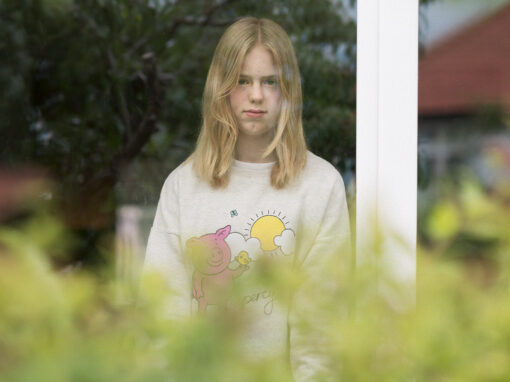I love mountains. There are few times when I am as happy as when I am walking in a Himalayan or Andean valley. One of these places once almost cost me my life but more happily have allowed the creation of some of my favourite photographs. These are not just images made by me, but by many landscape photographers and mountaineers. These pictures temporarily help satiate a longing to be in these landscapes that I do not think will ever go away.
I am not sure when exactly I began to obsess about the world’s highest places, but I suspect the origin is two-fold. Firstly, the place where I was born and grew up is flat, and when I say flat, I mean really flat. The hill that forms the centre of my hometown, which the Romans built a wall around and where the Normans situated a forbidding castle, is a mere pimple on the bottom of the grand scale of things. There is not a snow-capped peak in sight.
I think the second of the origin comes from a trip to Wales when I was a young boy. The mountains of Wales may not be Himalayan, Andean, or even Alpine in size, but they are nonetheless spectacular. When I was about ten years old, I joined a week-long school trip to the principality. For most of the trip, I recall being miserable and homesick. I admitted to my fellows that I was missing my parents. This gave them ample fodder for mockery for the entire week. My predicament was a particular source of amusement for one boy who neglected to consider the fact that his father was one of the accompanying chaperones and that this might have had something to do with his own misery-free state of mind!
Despite the homesickness, this trip contains one of my favourite childhood memories. On one of the days, we were taken for a long day hike over the shoulder of Mt. Tryfan. My mind still recalls drinking wonderfully cool water from a mountain stream that I found, only for one of the teachers to gleefully tell me that it probably had sheep’s pee in it. This was perhaps a little bit of a mean trick to play on a ten-year-old but is pretty funny these forty plus years later. Still, the water tasted amazing at the time, and its memory endures. As the hike progressed, the large group of children and adults began to fragment, and I soon found myself alone. In 2023, the idea of a child hiking alone in the Welsh wilderness is, frankly, outrageous, but back then, in the late 1970s and early 1980s, the teachers leading the trip did not bat an eyelid. It is probably a good thing that the weather that day was extremely clement.
I am not sure how accurate my memory is all these years later, but I think I probably spent a few hours walking alone. This included crossing the shoulder of Tryfan itself. From the shoulder, I could see rock climbers and other adventurous types making their way to the summit of the peak. I thought this the most remarkable thing. Curiously, I did not want to go and join them. To this day, I still have no urge to be a mountaineer. I just wanted to look. Tryfan is a beautiful mountain to begin with, and seeing these people on it made it even better. As I write this article, I can still close my eyes and see the peak before me. Of course, I have no idea how accurate this memory is, middle-age dulls these long-ago memories whether we like it or not, but I do not think that really matters. From this memory, and my origins in a very flat place, this love of wild mountains grew. Combining this obsession with photography was a perfectly natural progression. I adore looking at great photographs of mountains nearly as much as I like being in them myself.
Mountains provide an incredibly rich canvas for the photographer: from picturesque valleys to sublime peaks, from basecamp to the death zone, from thrilling mountaineering photographs to classical landscapes, and more. For mountain photographs to be successful, I believe that they must include multiple elements that include human drama, weather, the unusual, beauty either sublime or picturesque, and/or other worldly light. Except for a photograph of a younger version of me, which is included for reasons that will become apparent, I believe that the wonderful photographs in this article all include multiple examples of these element.
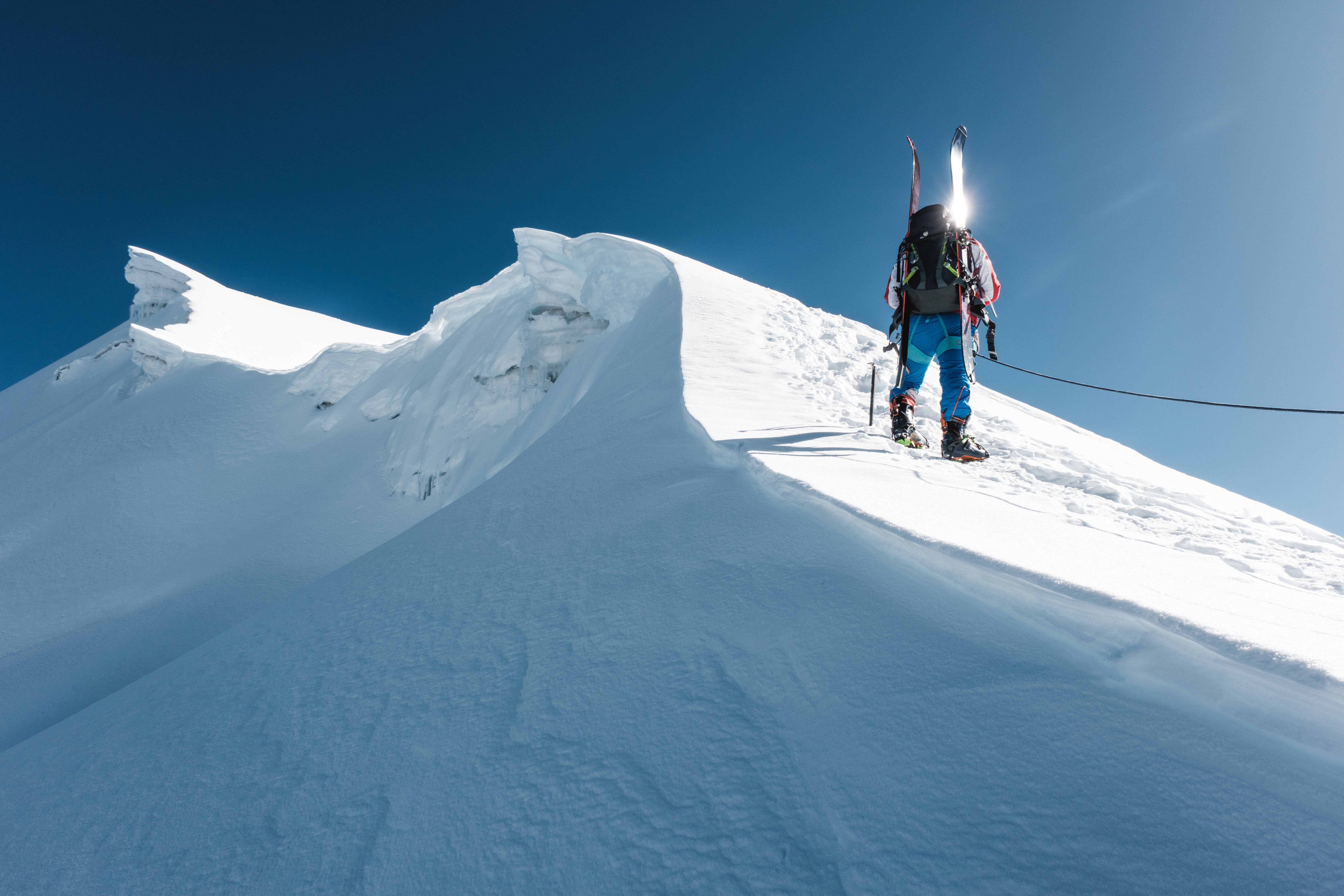
Nicolas Castermans is a serious adventurer and the photographs included here illustrate that perfectly. These are images that would be fully at home in a mountaineering guide or magazine. The photographs are, of course, beautiful, but although only one contains a human figure, both are about human drama. This drama is explicit in one and inferred from the other, and I love them both for that.
Summit Ridge is a classic mountaineering shot and is a genuinely thrilling photograph. It makes me recall George Mallory’s answer to when questioned about why he was going to climb Everest. His famous reply was, of course, “Because it’s there!” This reply was a grumpy response to endless questioning rather than deliberate profundity on Mallory’s part, but it was perfect, nonetheless. I want this climber to summit this peak because it is there. I also want him to be very careful as the lump of ice that appears to make up the summit, on the left of the photo, does not look completely stable!
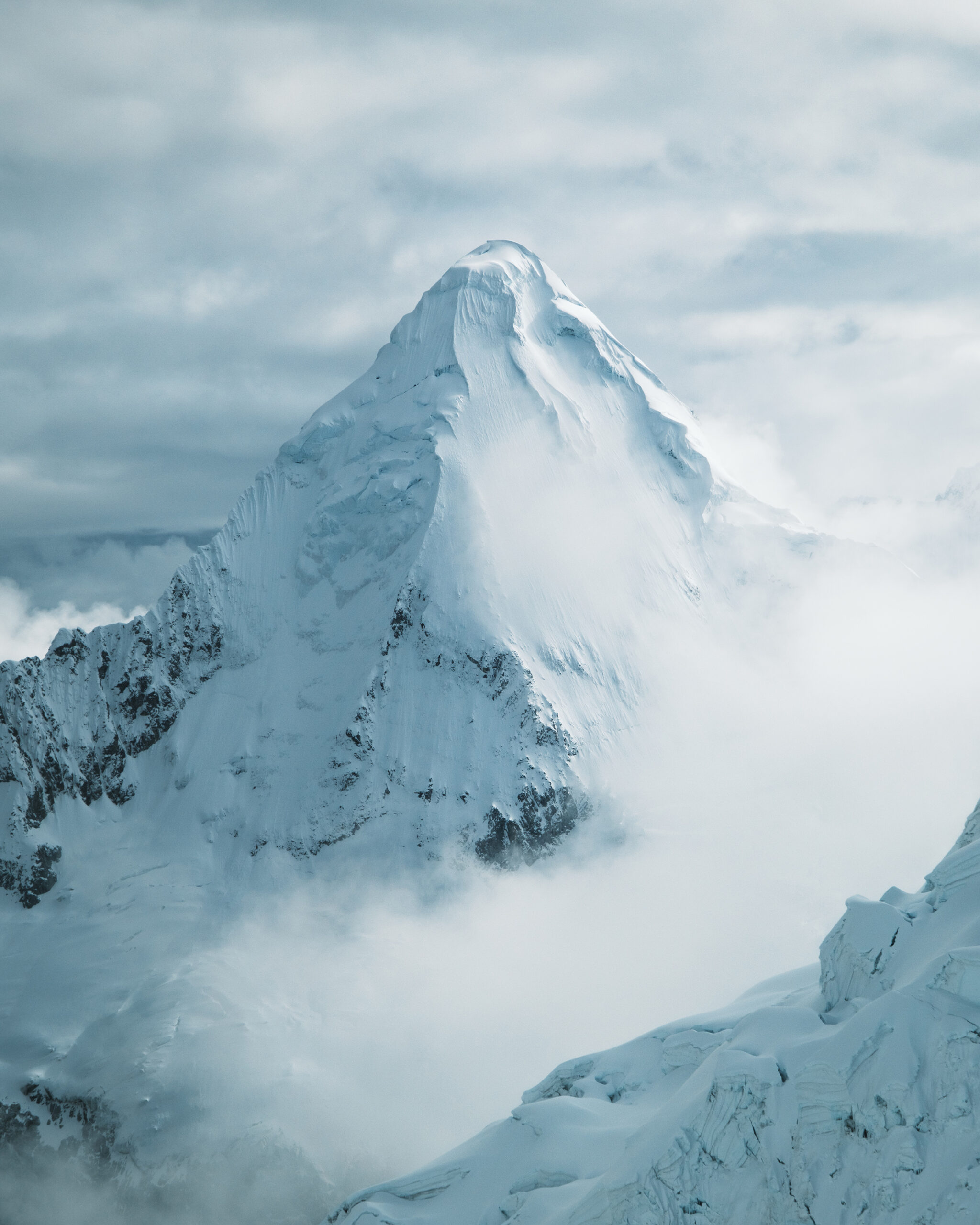
Castermans’s second photograph, which shows Artesonraju, the mountain which provided the inspiration for the peak seen in the Paramount Pictures logo, is also rich with drama. Unlike the previous image, there is no human figure to be seen, but the risk to any human daring to set foot on this peak is clear. What should also be obvious for the viewer is the risk that Castermans must have taken just to get in position to take the photograph! For a casual observer, like me, there appears to be no clear path to the top of Artesonraju: any chosen route must be terrifying. This is confirmed by the mountain’s climbing grade . It is rated difficult or higher on all routes. We must also note that as well as the mountain’s challenge, the weather appears none too hospitable either!
In contrast to the thrills and drama of the mountaineering photographs by Nicolas Castermans, the two images provided by landscape photographer Adriana Benetti Longhini are superb examples of classical mountain landscapes. Benetti Longhini is fortunate enough to live close to Italy’s Dolomites and has explored the region in detail. She feels that it is “an incredible destination for photographers” and recommends visiting during the tourist off-season when things are quieter.
Our cover image, Mount Pelmo and Belluno Dolomites, is in the grand traditions of the finest landscape picture makers. The photograph simply cries “Grandeur!” at the viewer. The composition is superb and the lighting perfect. In my mind, I am standing alongside the artist viewing this magnificent scene. For this image, Benetti Longhini photographed the mountain at sunset at the start of spring. Ever the committed landscape artist, she stayed overnight in freezing conditions to enable her to make more images in the morning. This one though is the standout and does full justice to a magnificent UNESCO World Heritage Site. The gorgeous colours in the image do not just come from those final rays of sunlight. The mountains themselves are formed of dolomite, a rock which has an unusual light grey colour which allows them to glow in these magical hues when the conditions are right.
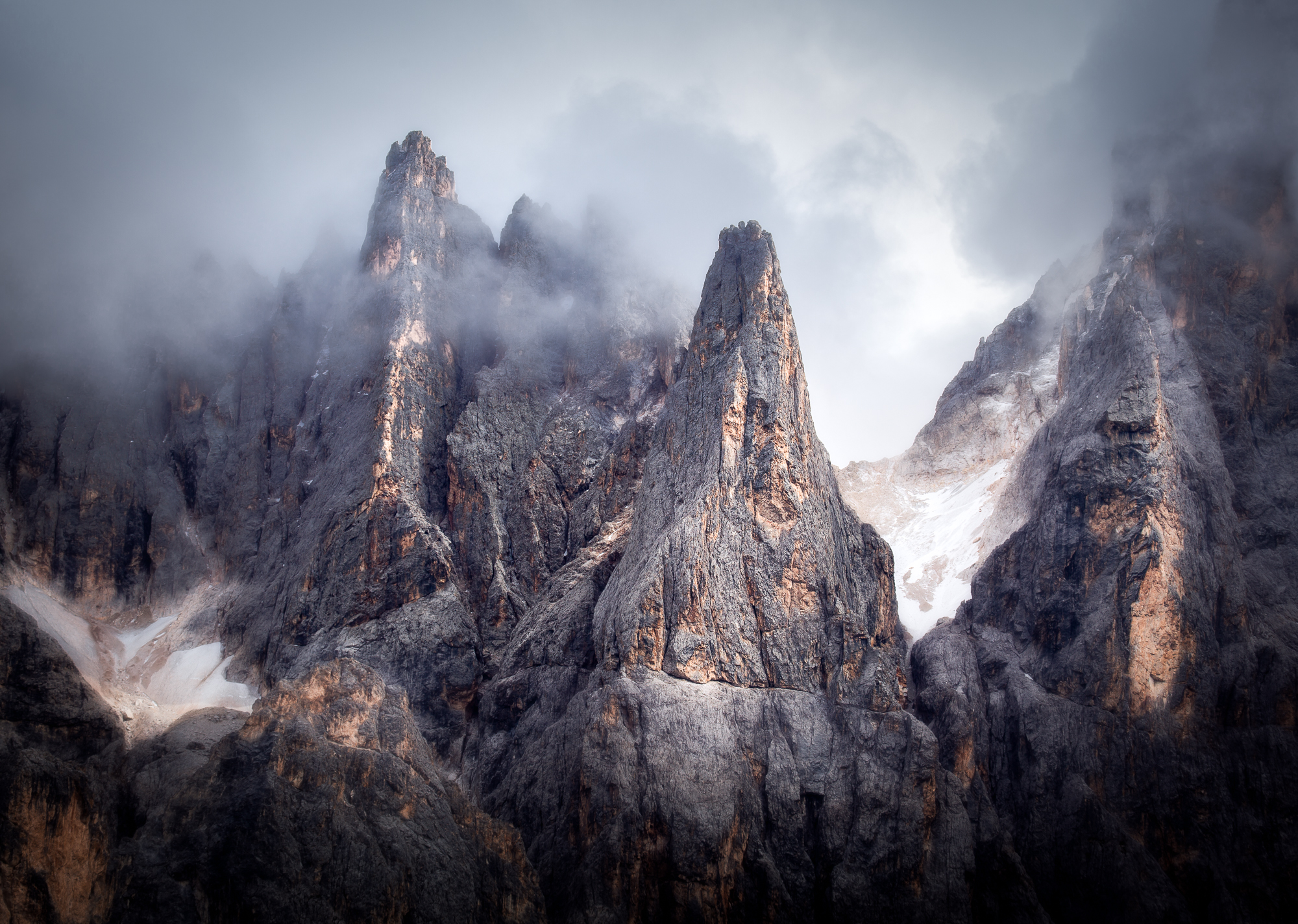
The Pale di San Martino range which is shown in Benetti Longhini’s second image are some of the most sublime peaks in the Dolomites. They are an enormous draw and have been photographed endlessly. This means that it is extremely difficult to get anything resembling a unique photograph. Thankfully, originality has been achieved here in a picture that is genuinely rich in atmosphere. It was the photographer’s intention to capture low clouds and possible storms on the peaks and, by using a 100-400mm lens, she takes us right into the mountains and well away from the cliches that can often be found in landscape photography.
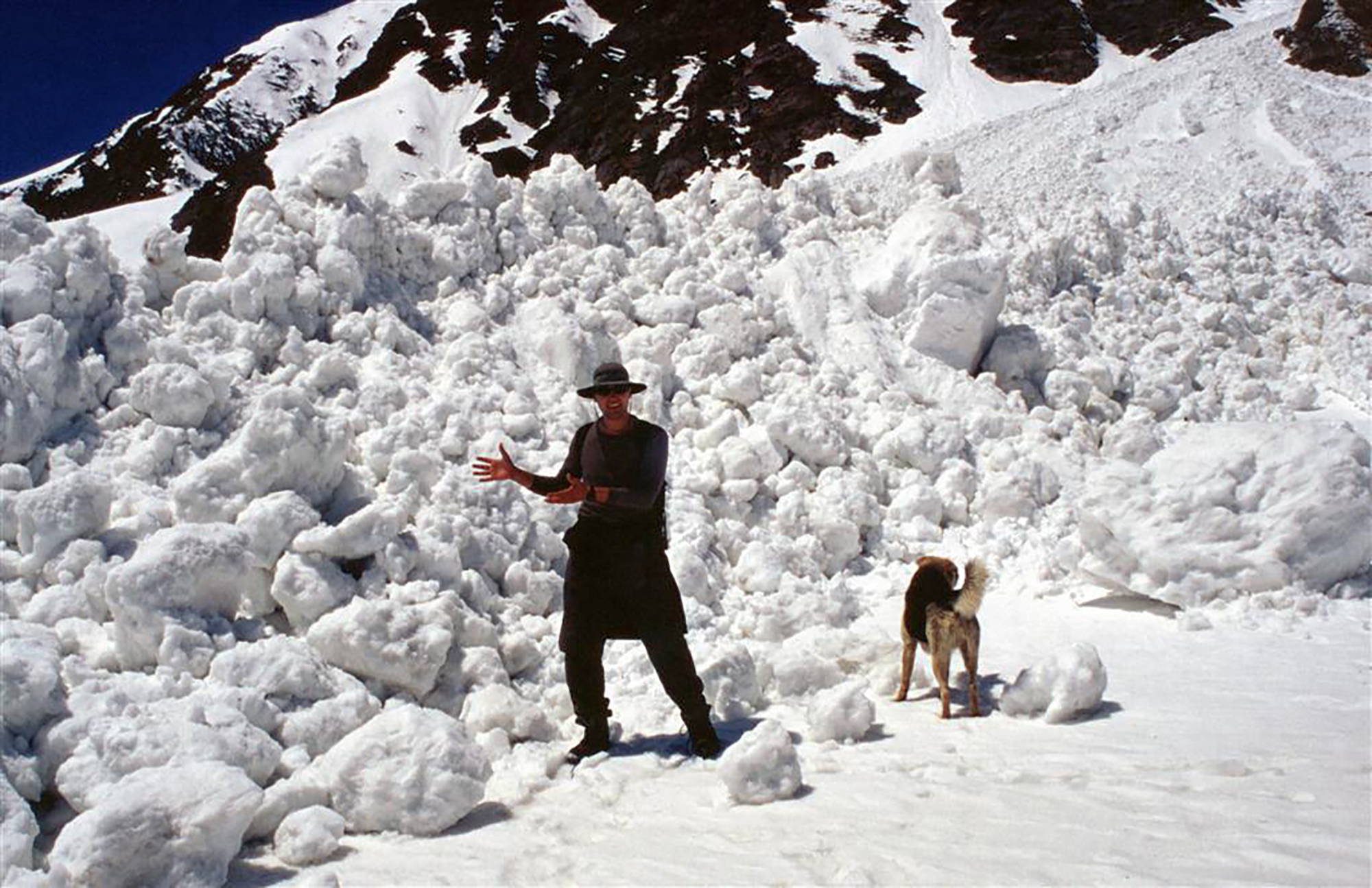
The last photograph I have included has none of the beauty of the four brilliant images from Andriana and Nicolas, but it does have serious, and unwanted, drama. At the start of this article, I mentioned that my obsession with mountains nearly cost me my life, and this rather poor-quality scan of an old Fuji Provia slide shows how. Whilst travelling in India in 2002, I and a friend went for a hike up a pass between two 5000m plus mountains above the village of Rakcham in Himachal Pradesh’s gorgeous Sangla Valley. This was a shocking mistake. We hired a local “guide” to take us who, it turned out, knew basically nothing about the mountain environment. Before we began the hike, I asked him if there was any chance of an avalanche. He told me no and that by that time of year any avalanche that was going to happen had already happened. This was not exactly true. I should have known better, but frankly I knew absolutely nothing about being in this kind of environment either.
After hiking uphill for several hours, we were perhaps an hour short of the pass. Here we decided to rest. Large peaks were beginning to reveal themselves on the other side and I was looking forward to making what I hoped were some dramatic photographs of these monsters. As we decided to end our rest and continue, we heard a large cracking sound above us. Millions of tonnes of ice began to fall towards us. My friend turned to me and shouted, “Run!”, and run we did. We were incredibly fortunate as we were quickly able to reach a large “bump” where none of the ice could reach. As you can see in the photograph, the ice soon surrounded us, but we were safe. However, the guide’s lovely dog, who he had brought along for company, was the most fortunate not to meet a nasty end. The dog stood right in front of the falling ice and watched it approach. Fortunately, he listened to our calls and ran towards us. This caused a scene that reminds me of Independence Day when Viveca A. Fox’s dog dives into cover and narrowly avoids a fireball. Of course, here fire was replaced with a wall of moving ice.
We soon turned around and headed back down the mountain. None of us felt in any position to continue. The photographs that I was planning to take were consigned to the history of my imagination where they remain to this day. At least, I have this one photograph that provides evidence of what happened. If you look closely, you can see that I am grinning like an idiot. I put this down to shock. I suffered a minor breakdown after this escape. I returned to the UK much earlier than I had planned and for the next six months or so, when I closed my eyes, all I could see was a wall of ice coming towards me.
In the years that have followed I have reflected on this experience often. We were inexperienced idiots and should never have attempted the hike. However, I now wonder if this avalanche actually saved our lives. If we had continued, we would have had to cross a snowfield where there was nowhere to hide from any subsequent avalanche. There was far more snow and ice in the gullies above this area than what came down on us. Had we been further on, and the same thing happened, I doubt that we would have had a means of escape.
Writing this article has made me ache for the mountains once again. I want to be back in the Himalaya with my camera. I think that the four beautifully crafted images from Nicolas Castermans and Adriana Benetti Longhini show what came be achieved when we turn our cameras on the world’s highest places. All four images are quite unique and are excellent for very different reasons. The photograph of me, whilst not captured with the same skill as the others, successfully illustrates what can happen when you venture into these places carelessly or without adequate knowledge of equipment. It reminds me to ensure that next time I am in the mountains, I will do my damnedest to do so safely. I hope you will do the same.
ADRIANA BENETTI LONGHINI
NICOLAS CASTERMANS



